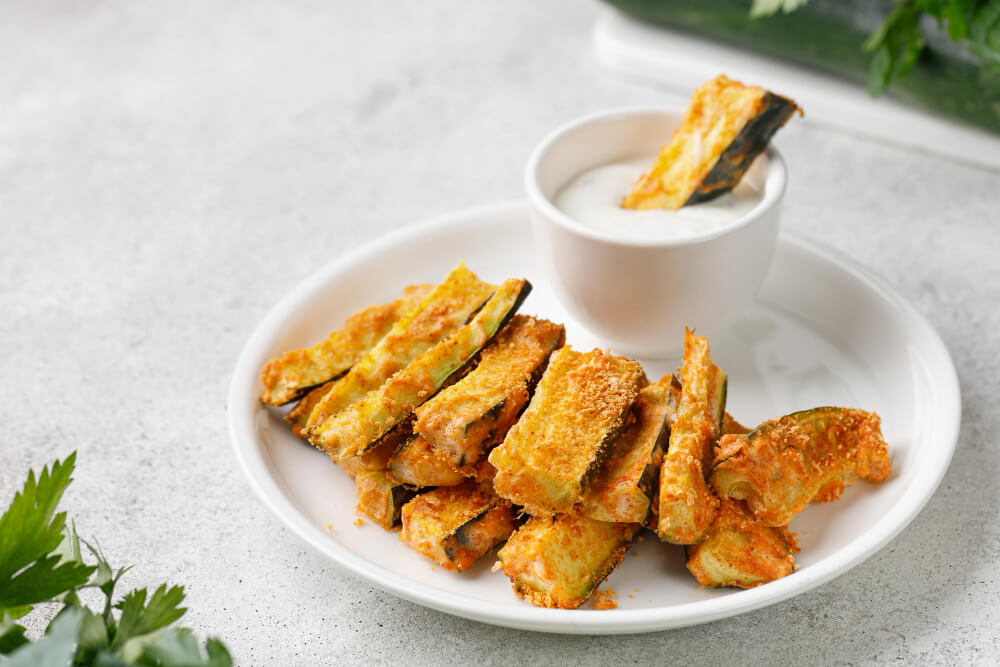
Mangoes are a delicious and nutritious fruit that are enjoyed all over the world. They are full of vitamins, antioxidants, and fiber, making them a healthy addition to any diet.
However, cutting a mango can be a tricky task for some people, especially if they are not familiar with the best way to do it. There are several ways to cut a mango without using a peeler, including scoring the mango, slicing it lengthwise, and cutting it into cubes.
Each method has its own unique advantages, and the best way to cut a mango will depend on your personal preference and the intended use of the fruit.
Cutting Mangoes: Step-By-Step Guide
Mangoes are a delicious and versatile fruit, but they can be tricky to cut due to their unique shape and large pit. In this step-by-step guide, we will explore several methods for cutting mangoes, including cubes, lengthwise, and more. We will discuss how to separate the mango flesh, hold the mango upright, and safely use a sharp knife to cut. Let's get started!
Preparation
- First, gather the necessary equipment: a wooden cutting board, a sharp knife, a small paring knife, and a clean kitchen towel.
- Wash the mango thoroughly under running water to remove any dirt and residue.
- Dry the mango with a clean kitchen towel.
- Place the mango on the wooden cutting board, ensuring it is stable and secure.
Method 1: Cutting Mango Cubes
- Hold the mango upright, with the stem end facing up. The stem end is the part of the mango where it was attached to the tree.
- Use a sharp knife to cut off the mango's sides, about a quarter-inch from the center on each side. This will give you two mango halves and leave the pit in the middle.
- Place one mango half on the cutting board, skin side down.
- Use the knife to score the mango flesh in a grid pattern, making sure not to cut through the skin. The size of the cubes will depend on how deep and wide the cuts are.
- Invert the scored mango half, pushing the skin from underneath to separate the mango flesh from the skin.
- Use a small paring knife to cut the cubes away from the skin and into a bowl or plate.
- Turn the mango around and repeat the process with the other half.
- For the remaining mango flesh around the pit, use the paring knife to carefully separate the mango skin from the flesh and cut it into cubes.
Method 2: Cutting Mango Lengthwise
-
Stand the mango upright on the wooden cutting board, with the stem end facing up.
-
Hold the mango securely with one hand, while using a sharp knife to make a lengthwise cut along one side of the mango, about a quarter-inch from the center. This will create a mango cheek, as you should feel the knife glide along the edge of the pit.
-
Turn the mango around and repeat the process on the other side, cutting another lengthwise slice, or mango cheek.
-
Place one mango cheek on the cutting board, skin side down.
-
Use a small paring knife to carefully peel the skin away from the flesh, starting at one end of the mango cheek and moving along the curve.
-
Once the skin is removed, use a knife to cut the flesh into long, thin strips.
-
Scoop the mango strips onto a plate or bowl.
-
Repeat the process with the other lengthwise slice.
-
For the remaining flesh on the sides of the mango, use the paring knife to carefully cut along the sides of the pit, separating the flesh from the pit.
-
Peel the skin from the remaining flesh and cut it into long, thin strips.
How to Store Sliced Mangos

Mangoes are a delicious tropical fruit that can be used in various mango recipes, from smoothies and fruit salads to salsas and desserts. However, once you've sliced your mango into cubes or strips, it's essential to store them correctly to maintain their freshness and flavor. In this guide, we'll provide you with the best ways to store sliced mangoes, whether you have cubes of mango, mango pieces, or mango chunks.
-
Choose the right container: The first step in storing sliced mangoes is selecting the appropriate container. Use an airtight container that is large enough to hold all the mango pieces without squashing them. Glass containers with airtight lids or resealable plastic bags are ideal choices. Ensure that the container is clean and dry before placing the mango inside.
-
Prepare the mango: After cutting the mango into cubes, pieces, or chunks, gently pat them dry with a clean kitchen towel or paper towel to remove any excess moisture. Excess moisture can cause the mango to spoil more quickly.
-
Transfer the mango to the container: Place the mango pieces or chunks in the airtight container, ensuring they are evenly spread out and not overcrowded. Overcrowding can cause the mango to become mushy and spoil faster.
-
Seal the container: Close the airtight container or seal the plastic bag tightly, ensuring that no air can enter. Air exposure can cause the mango to dry out and lose its freshness.
-
Label the container: It's helpful to label the container with the date you sliced the mango, so you know how long it has been stored. This will help you keep track of its freshness and determine when it's time to use or discard the mango.
-
Store the container: Place the container with the mango in the refrigerator. Storing the mango in an airtight container in the fridge helps maintain its freshness and slow down the ripening process. Properly stored mango pieces or chunks can last in the refrigerator for up to five days.
-
Use or freeze the mango: If you don't plan to use the mango within five days, consider freezing the mango pieces for longer-term storage. Spread the mango cubes on a parchment-lined baking sheet and freeze them for several hours or until solid. Once the mango is frozen, transfer the cubes to a resealable plastic freezer bag, label with the date, and store them in the freezer. Frozen mango can be used in various mango recipes, such as smoothies, and can last up to six months in the freezer.
By following these steps, you can ensure that your sliced mangoes remain fresh and flavorful, ready to be used in your favorite tropical fruit dishes or enjoyed as a refreshing snack. Remember to store your mango in an airtight container, refrigerate or freeze it as necessary, and use it within the recommended timeframes for the best taste and quality.
How to Buy Good Mango Every Time

Buying a good mango every time is essential to fully enjoy this delicious tropical fruit. Aside from learning how to cut a mango, knowing how to choose a ripe mango is crucial for obtaining the best flavor and texture. Here are some tips that will help you select the perfect mango every time:
Check the color
Although color is not the most reliable indicator of ripeness, it can give you an initial idea if you have fresh mango or not. Ripe mangoes typically have a vibrant yellow, orange, or red hue, depending on the variety. However, some mangoes may still have a green skin when ripe, so it's essential to consider other factors as well.
Feel the texture
Gently press the mango with your fingers. A ripe mango should yield slightly to gentle pressure, indicating that the flesh inside is soft and juicy. If the mango feels too hard, it is likely underripe and will have a sour taste. On the other hand, if the mango feels too soft or mushy, it may be overripe and have an off flavor or texture.
Smell the aroma
A ripe mango will have a sweet, fragrant aroma around the stem end. If you can't detect any scent, the mango may still need some time to ripen. On the contrary, if the mango has an overly strong or fermented smell, it may be an indication that the mango is too ripe.
Examine the shape
A ripe mango should have a full, plump shape, indicating that the fruit has developed its juicy flesh. If the mango appears to be flat or shriveled, it may not be ripe or of good quality.
Avoid blemishes
While some minor imperfections on the skin are normal, it's essential to avoid mangoes with significant blemishes, such as dark spots, deep wrinkles, or large dents. These imperfections could be signs of bruising or decay, which can affect the taste and texture of the mango.
Test the weight
A ripe mango should feel heavy for its size, indicating that it is filled with juicy flesh. If the mango feels too light, it may not be ripe enough or may have a low water content, resulting in less flavorful pieces of mango.
By considering these factors, you can tell if a mango is ripe and choose the best one every time. Remember to look for a vibrant color, slightly yielding texture, sweet aroma, full shape, and heavy weight when selecting a mango. And, keep in mind that some mangoes may continue to ripen after purchase, so don't be afraid to buy a slightly underripe mango and allow it to ripen at room temperature for a few days before enjoying it.
Conclusion
In conclusion, learning how to choose and cut a ripe mango properly can elevate your enjoyment of this delicious tropical fruit. By following the tips shared in this guide, you can master every method for how to cut a mango and enjoy its juicy, sweet flesh in various dishes.
Mangoes can be a delightful addition to smoothies, fruit salads, salsas, desserts, and more. Once you've mastered cutting and selecting mangoes, you'll be able to scoop out the flesh and incorporate it into countless recipes to add a burst of tropical flavor.
Related Articles
- How to Cut an Avocado the Easy Way
- How to Cut a Papay the Easy Way
- How to Cut a Cantaloupe the Proper Way
- How to Cut a Dragon Fruit Like a Pro
Related Products You Might Like
When cutting mangoes or any other fruit, a high-quality cutting board is essential. Wooden cutting boards, like those offered by Mevell, provide a durable and hygienic surface for your culinary needs. A well-crafted wooden cutting board not only protects your knives but also adds a touch of elegance to your kitchen.
The next time you place a mango on your cutting board, make sure you're using a reliable and attractive product, like those offered by us, to ensure the best possible experience when preparing your favorite tropical fruit.



